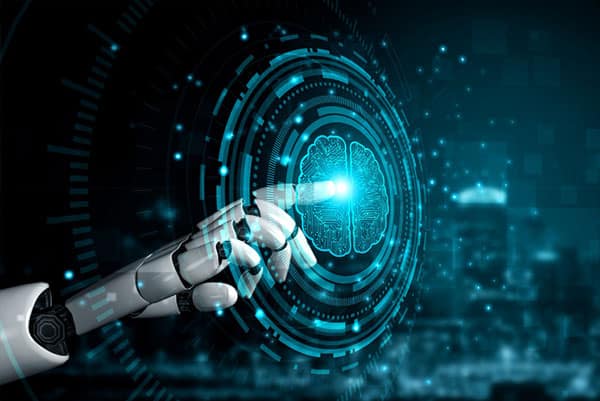Gamification is the use of game mechanics and design principles in non-game contexts to motivate and engage people. It has been widely adopted in many fields, including education, marketing, and employee engagement.
In this post, we’ll look at the rise of Artificial Intelligence (AI) and the growing interest in incorporating AI technologies into a comprehensive gamification strategy to enhance its effectiveness.
What is Gamification?
Gamification is the strategic use of game design elements and game mechanics in non-game contexts to engage and motivate individuals. By incorporating game principles into real-world situations, gamification aims to increase participation, productivity, and overall experience. This approach is widely used in various fields, including education, marketing, and employee engagement, to create interactive, immersive, and rewarding experiences that drive behaviour change and achieve desired outcomes. Whether it’s through points, badges, or leaderboards, gamification leverages the engaging nature of games to make everyday tasks more enjoyable and motivating.
Benefits and Drawbacks of Gamification
Advantages of Gamification
Gamification is a powerful tool for enhancing engagement, motivation, and knowledge retention. In workplaces, it significantly boosts employee engagement, leading to increased productivity and job satisfaction. Businesses benefit from gamification by enhancing customer loyalty and boosting conversion rates through engaging, interactive marketing campaigns.
Potential Drawbacks
However, potential drawbacks exist. Overemphasizing competition can cause stress or burnout. There’s also a risk of addiction, where individuals become overly focused on game elements instead of the actual tasks. Measuring gamification’s effectiveness can be challenging, and it might not suit all contexts or audiences.
Designing Effective Strategies
Carefully design and evaluate gamification strategies to ensure their effectiveness. Tailor them to the target audience and consider the context. This approach helps minimize potential negative outcomes and maximizes the benefits of gamification.
Unleashing the Power of AI in Gamification
Gamification offers numerous advantages, but it’s essential to balance its use. By understanding potential drawbacks and designing thoughtful strategies, organizations can harness gamification’s power to engage, motivate, and achieve desired outcomes effectively.
Why Use AI in Game Mechanics?

AI can add a new level of personalization to gamification, which makes it more engaging and motivating for individuals. Using AI algorithms to analyze user data, gamification designers can create tailored experiences customized to individual players.
These tailored experiences often incorporate various gamification elements such as points, rewards, and progress tracking to enhance user engagement. This can lead to a more engaging and immersive experience better suited to each individual’s preferences and interests.
One of the key benefits of using AI in gamification is its ability to learn from user data. AI can create a personalized experience that adapts to each user’s needs by analyzing user behavior and preferences. This can include recommendations for content or activities, personalized challenges or rewards, and even predictive analytics that anticipate what the user might want or need next.
Many online learning platforms, like Duolingo and Khan Academy, use AI to integrate these gamification elements, making the educational experience more interactive and enjoyable.
For example, imagine a gamified fitness app that uses AI to track user behaviour and provide personalized recommendations. The app could analyze the user’s activity levels, exercise preferences, and diet to create a customized fitness plan.
The app could also use machine learning to track the user’s progress and adjust the plan accordingly, providing personalized feedback and motivation along the way. Such gamification platforms are designed to adapt and evolve, ensuring continuous engagement and motivation for users.
AI can enhance the social aspect of gamification by analyzing user data to create meaningful interactions. By examining social connections and user behaviour, AI can suggest friends or teammates based on shared interests or skill levels, fostering a collaborative gaming experience and a sense of community.
Gamification also utilizes AI through natural language processing (NLP), enabling AI to understand and analyze human language for more immersive experiences. For instance, a gamified learning platform can use NLP to evaluate student responses and offer feedback tailored to individual strengths and weaknesses, enhancing the learning experience to better meet each student’s needs.
AI can also be used to create more dynamic and adaptive gamification experiences. Using machine learning to analyze user data, gamification designers can create experiences that adapt and evolve over time. This can include personalized challenges that get more difficult as the user progresses or dynamic rewards that change based on user behaviour.
For example, a gamified sales training platform could use AI to analyze sales data and create personalized challenges and rewards for each salesperson. As the salesperson improves their performance, the challenges and rewards could become more challenging and rewarding, providing continuous motivation and engagement.
Game Mechanics and AI
Game Mechanics and AI
Game mechanics are the foundation of gamification, including points, badges, leaderboards, and rewards. These elements create engaging experiences. AI elevates these mechanics by personalizing and adapting them. By analyzing user data, AI tailors experience to individual preferences.
Personalized Experiences
AI offers real-time feedback and adjusts challenges and difficulties to keep users engaged. It enhances social interactions by suggesting connections based on shared interests or skill levels. This fosters community and collaboration, making the experience more engaging and enjoyable.
AI-Driven Adaptation
AI adapts gamification experiences over time. It creates personalized challenges that increase in difficulty as users progress. Dynamic rewards change based on user behaviour, ensuring continuous motivation. This approach keeps users engaged and encourages ongoing participation.
Real-time Feedback and Adaptive Learning
- Real-time feedback provides users with immediate insights into their performance, allowing them to make quick adjustments and improve their outcomes. This instant feedback loop keeps users engaged and motivated.
- Adaptive learning involves personalizing the difficulty of challenges and recommending content or activities based on user performance and preferences.
- AI-powered gamification excels in continuously analyzing user data to provide tailored experiences.
- This dynamic approach ensures that users are always challenged at the right level, making the learning process more engaging and effective.
Industry Applications of Gamification
- Education:
- Transforms traditional learning into interactive and immersive experiences.
- Significantly improves knowledge retention and student motivation.
- Utilizes gamified learning to engage students and enhance educational outcomes.
- Marketing:
- Creates engaging and interactive experiences through gamification strategies.
- Drives customer loyalty and increases conversion rates.
- Leverages game-like elements to make marketing campaigns more effective.
- Employee Engagement:
- Offers personalized and adaptive learning experiences.
- Boosts productivity and job satisfaction.
- Incorporates gamification techniques to motivate participants and enhance engagement.
- Healthcare:
- Promotes healthy behaviours and improves patient outcomes.
- Uses interactive experiences to engage users in health-related activities.
- Incorporates gamification elements to encourage participation and motivation.
By adding gamification elements across various sectors, these strategies drive significant improvements in participation, motivation, and overall success.
Avoiding Critical Errors in Gamification
Potential Downsides of AI in Gamification
AI in gamification poses challenges, such as losing control over the experience. Complex algorithms can obscure decision-making, reducing transparency and trust.
Privacy and Security Concerns
AI’s data analysis risks exposing sensitive information, compromising user privacy and security. This could erode system trust and have severe consequences.
Ethical Use of AI
Responsible AI use in gamification requires data protection, transparency, and accountability. Users should be involved in design and have control over their data.
Revolutionizing Engagement with AI
Despite challenges, AI-powered gamification offers personalized, adaptive experiences. It revolutionizes engagement and motivation by driving behaviour change and achieving desired outcomes.
To maximize AI’s benefits in gamification, understanding the design’s goals and objectives is crucial. Identify the target audience, define desired behaviour changes, and select appropriate game mechanics and design principles. Adding elements like points, rewards, and social interaction enhances user engagement and motivation.
Consider ethical and privacy implications when using AI in gamification. Protect user data, ensure transparency, and involve users in the design process. Give them control over their data and experience.
AI in gamification can revolutionize engagement and motivation. It creates personalized, dynamic, and adaptive experiences that drive behaviour change and achieve desired outcomes.
Approach the design process with clear goals and objectives. Consider ethical and privacy implications. Responsible use of AI-powered gamification can transform engagement and motivation across various contexts. Effective gamification requires a well-thought-out strategy that integrates game design elements to achieve desired outcomes.
Gamify AI with Spinify for Employee Engagement
Spinify’s gamification platform uses AI to create personalized and engaging experiences for sales teams. By analyzing sales data and individual performance metrics, Spinify’s AI algorithms can create personalized leaderboards, challenges, and rewards that motivate sales teams to achieve their goals. The principles behind these gamification platforms are similar to those used in educational games like Math Blaster and Carmen Sandiego, which aimed to enhance engagement through interactive game mechanics.
Spinify’s AI-powered gamification features include personalized coaching, predictive analytics, and social engagement tools that help sales teams stay focused and motivated. With its AI-powered features, Spinify provides sales teams with a dynamic and adaptive gamification experience that drives behaviour change and improves performance.
As an advanced gamification platform, Spinify has recently announced a new AI-powered feature called Sidekick. This feature is powered by SpinifyGPT and based on the cutting-edge GPT-3 language model, which uses deep learning to generate human-like language. Soon to be rolled out, Sidekick leverages this technology to create engaging and personalized content for sales teams.
By analyzing sales data and individual performance metrics, Sidekick will generate customized competition templates, achievements, badges, and so much more that are tailored to your metrics and industry in a fun and engaging way.
With Sidekick, sales teams can benefit from an AI-powered gamification experience that is not only dynamic and adaptive but also personalized and human-like. The engaging aspects of playing video games have inspired the integration of game elements into non-game contexts, making these platforms highly effective in motivating behaviour. Are you ready to take your team to the next level? Today to learn more about these exciting AI developments and to see Spinfiy in action.






